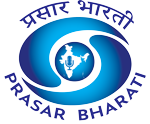In the hustle of everyday government processes, there has been a silent but profound shift underway, one that anchors itself not in more bureaucracy, but in deeper trust. The National Blockchain Framework (NBF), launched by the Ministry of Electronics and Information Technology in September 2024 with a budget of ₹64.76 crore, is India’s answer to ingraining transparency and accountability at the very heart of its digital governance.
Early on, India’s governance model largely relied on centralized data silos, databases held by departments, services executed through layers of permissions, and records vulnerable to error, delay, or even tampering. Recognizing this, the government charted a path where blockchain’s hallmarks of immutability, decentralized validation, and shared ledger technology could be harnessed for the public good. Accordingly, the NBF emerges as a clear pivot from conventional IT infrastructure to what could be described as “trust-by-design.”
At the heart of this framework lies the Vishvasya Blockchain Stack, India’s indigenous, modular “blockchain-as-a-service” platform deployed across data centers in Bhubaneswar, Pune, and Hyderabad under the aegis of the National Informatics Centre (NIC). On this backbone rest two other critical components: the sandbox environment called NBFLite, which allows startups, researchers, and academic institutions to prototype blockchain applications; and Praamaanik, a tool to verify the authenticity of mobile applications via blockchain entries.
Fast-forward to today: the numbers already tell a compelling story. Over 34 crore documents have been verified on this platform as of 21 October 2025, spanning certificate and document chains, property records, judiciary, and logistics applications. What began as architecture has swiftly matured into operational reality, with meaningful traction in cross-sector usage. For citizens, that means fewer doubts around the legitimacy of documents; for businesses and regulators, a new level of auditability and reliability.
Looking ahead, the benefits stretch across multiple dimensions. For governance, processes once mired in trust deficits now gain resilience, tampering becomes extremely hard, verification is instant, and audit trails are transparent. For citizens, the promise is faster delivery of services, reduced middleman dependency, and less chance of fraud. For the economy, it means enabling interoperable systems that can host startups and tech innovation in India, reinforcing the “Atmanirbhar Bharat” drive by building homegrown blockchain capabilities rather than relying on foreign platforms.
Yet, no transformation comes without its contours of challenge. Scaling such a framework across states, departments, and diverse legacy systems will require continuous capacity-building and coordination. Legal and regulatory frameworks around data, decentralized identity, and interoperable ledgers need alignment. Political and administrative will must keep pace with technological rollout. And finally, citizen understanding and trust must grow for technology to truly become empowering.
In the words of PM Narendra Modi: “A Digital India is an empowered India, boosting ease of living and transparency.” The NBF is not merely another infrastructure project; it is a leap in embedding trust into digital governance. If executed fully, this initiative could well mark a turning point in how India uses technology not just to serve, but to uplift.
As the framework matures, the expectation is clear: governance that is prompt, verifiable, and citizen-centric; technology that is homegrown and scalable; and a digital infrastructure that doesn’t just connect systems but binds trust. For India, the National Blockchain Framework might just be the new backbone of its digital future.










